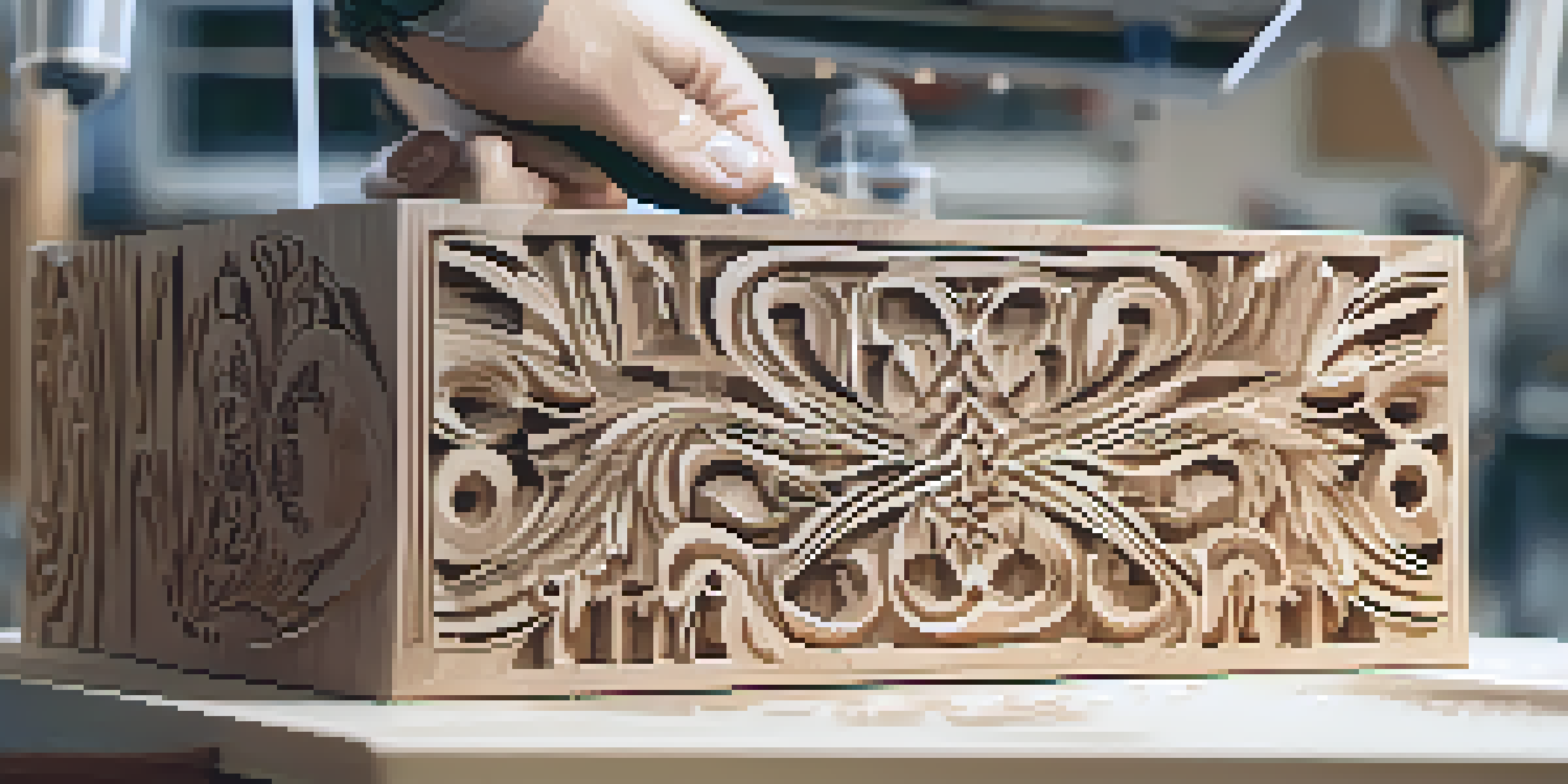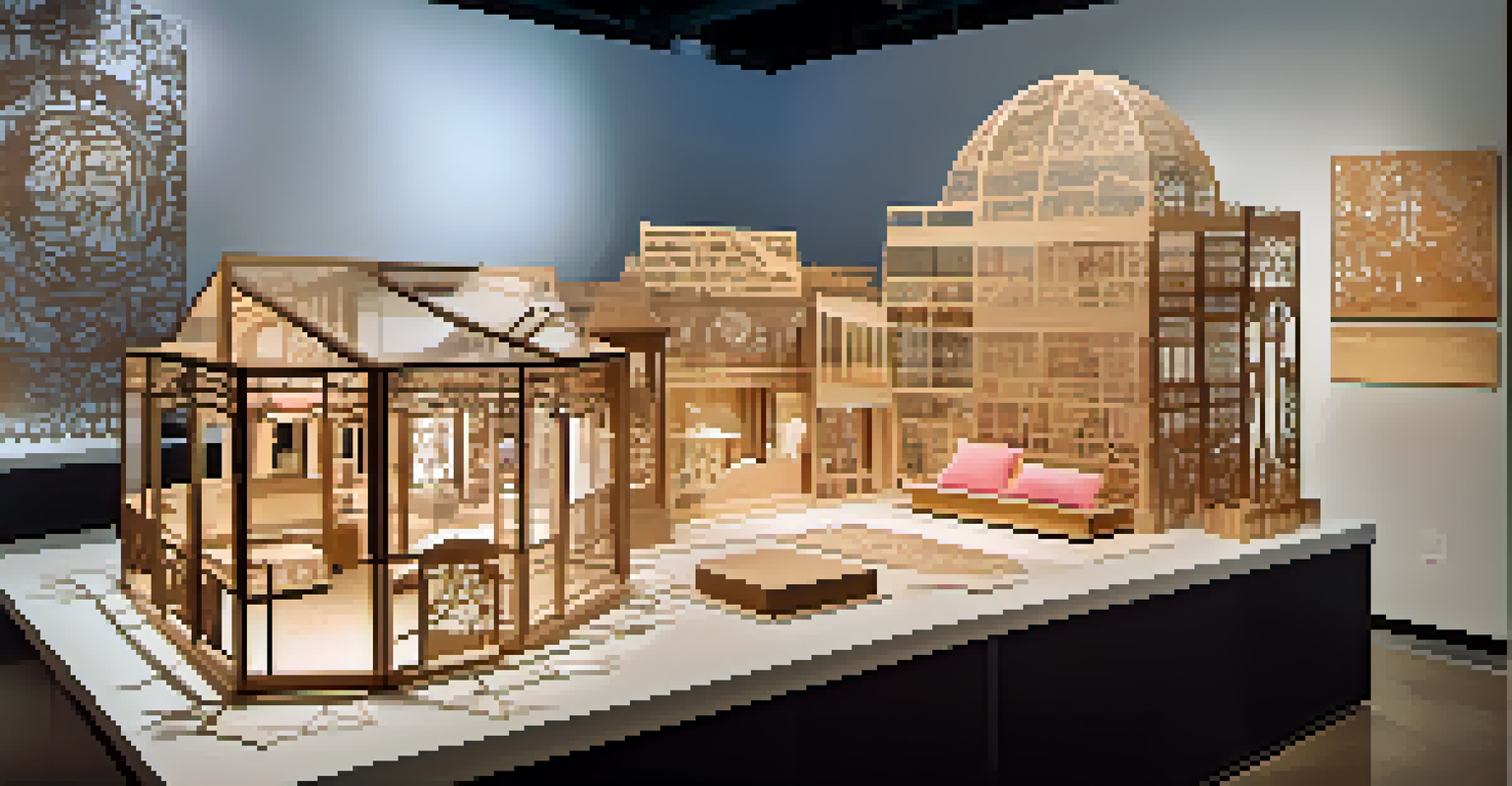Carving in the Digital Era: Tools and Technologies Overview

Introduction to Digital Carving: A New Frontier in Art
Digital carving is revolutionizing how artists and craftspeople approach their work. By merging traditional techniques with cutting-edge technology, creators can achieve precision and artistry that was previously unattainable. This new frontier allows for experimentation and creativity, making art more accessible and diverse.
Art is not freedom from discipline, but disciplined freedom.
The rise of digital tools has made it possible for anyone to try their hand at carving, whether as a hobby or a professional pursuit. From 3D modeling software to CNC machines, the options are vast and exciting. These innovations have democratized the art form, providing opportunities for collaboration and learning.
As we dive deeper into the world of digital carving, we'll explore the various tools and technologies that are shaping this modern craft. Each section will highlight specific aspects of the digital carving process, showcasing how these advancements enhance creativity and efficiency.
3D Modeling Software: The Canvas of the Digital Carver
3D modeling software serves as the primary medium for digital carvers, allowing them to design intricate pieces with ease. Programs like Blender, Rhino, and Fusion 360 provide a platform for artists to visualize their ideas before they materialize. By creating a digital prototype, users can experiment with shapes, sizes, and textures without the fear of wasting materials.

These tools often come with user-friendly interfaces, making them accessible for beginners while still offering advanced features for seasoned professionals. The ability to manipulate and tweak designs in real time fosters a creative environment where innovation thrives. With tutorials and online communities, learning these programs has never been easier.
Digital Carving Transforms Art
The integration of digital tools is revolutionizing traditional carving techniques, allowing for greater precision and creativity.
As artists become more adept at using 3D modeling software, the possibilities for digital carving expand exponentially. From custom sculptures to detailed jewelry designs, the software allows for a level of detail and complexity that traditional methods may struggle to achieve.
CNC Machines: Precision Carving at Your Fingertips
Computer Numerical Control (CNC) machines have transformed the carving landscape by providing unparalleled precision. These machines operate using programmed instructions, allowing for highly detailed cuts that manual tools simply can't replicate. Whether it's wood, stone, or metal, CNC machines can produce consistent results every time.
The best part of a digital carving is that it allows you to explore ideas without the constraints of traditional methods.
One of the great advantages of CNC carving is its ability to scale projects easily. Artists can create large installations or intricate designs without compromising on detail. This level of efficiency is a game-changer for those looking to produce high-quality work in less time.
As CNC technology continues to evolve, we see advancements in speed, accuracy, and affordability. This accessibility means that more artists can invest in CNC equipment, further pushing the boundaries of what is possible in digital carving.
Laser Cutters: Bringing Designs to Life with Light
Laser cutters have emerged as another powerful tool in the digital carving toolkit. These machines use focused beams of light to cut or engrave materials, allowing for intricate designs to come to life with precision. From delicate patterns to bold shapes, laser cutting offers a unique approach to digital carving.
The versatility of laser cutters means they can work with a variety of materials, including wood, acrylic, and even fabric. This flexibility opens up a world of possibilities for artists, enabling them to experiment with different mediums and techniques. The ability to prototype quickly is also a huge advantage, as artists can easily test their designs before finalizing them.
Community Enhances Learning
Online platforms enable artists to share their work and collaborate, fostering innovation and a supportive community in digital carving.
Moreover, laser cutters can be integrated with 3D modeling software, streamlining the design-to-production process. This synergy between digital design and physical creation exemplifies the innovative spirit of modern carving, making it an exciting time for artists.
3D Printing: A New Dimension in Carving
3D printing is revolutionizing the way artists approach carving by allowing for the creation of complex forms that would be difficult or impossible to achieve by hand. This technology enables the layering of materials to build up intricate designs, offering a new dimension to the carving process. Artists can experiment with shapes and structures that push the boundaries of traditional carving.
One of the key benefits of 3D printing is the rapid prototyping capability. Artists can quickly iterate on designs, testing different ideas in a matter of hours. This fast-paced approach fosters a creative environment where innovation thrives, allowing artists to explore new concepts without the constraints of time or materials.
As the technology becomes more accessible, we're likely to see an influx of artists incorporating 3D printing into their workflows. This could lead to a fusion of traditional carving techniques with modern technology, producing unique pieces that reflect the best of both worlds.
Augmented Reality: A New Tool for Visualization
Augmented reality (AR) is becoming an essential tool for digital carvers, enhancing the way they visualize and interact with their designs. By overlaying digital elements onto the real world, AR allows artists to see their work in context before committing to a final product. This technology can help identify design flaws and make adjustments in real time.
With smartphones and tablets equipped with AR capabilities, artists can easily access this technology without the need for expensive equipment. This accessibility means that more creators can incorporate AR into their processes, offering new insights and perspectives on their work. It also provides a fun and engaging way to showcase creations to clients or audiences.
Future of Carving is Bright
Embracing new technologies like CNC machines and 3D printing is redefining the carving landscape and expanding creative possibilities.
As AR technology continues to advance, we can anticipate even more innovative applications within the realm of digital carving. The potential for engagement and interaction could redefine how artists present their work and connect with their audience.
The Community Aspect: Learning and Sharing in the Digital Era
The digital carving community is thriving, thanks in part to online platforms and social media. Artists now have the ability to share their work, receive feedback, and collaborate with others from around the world. This sense of community fosters creativity and innovation, as individuals can inspire one another and exchange ideas.
Platforms like Instagram, YouTube, and dedicated forums have become invaluable resources for learning and sharing techniques. Tutorials, live demonstrations, and virtual workshops allow artists of all skill levels to enhance their craft. This collaborative spirit not only enriches the individual artist's experience but also elevates the entire field of digital carving.

As the community continues to grow, we can expect to see new trends and techniques emerge, driven by the diverse influences of artists everywhere. This interconnectedness ensures that digital carving remains a dynamic and evolving art form.
Conclusion: Embracing the Future of Carving
The digital era has opened up a world of possibilities for carving, blending tradition with innovation. As artists embrace new tools and technologies, they are not only enhancing their own work but also redefining the art form itself. The journey from concept to creation is now more accessible and exciting than ever.
By understanding and utilizing the various digital carving tools available, artists can push their limits and explore new creative horizons. Whether through CNC machines, laser cutters, or 3D printing, the potential for unique and stunning creations is virtually limitless.
As we look to the future, the fusion of technology and artistry promises to bring even more advancements in the carving world. Embracing these changes will allow artists to flourish and inspire future generations, ensuring the art of carving remains vibrant and relevant.